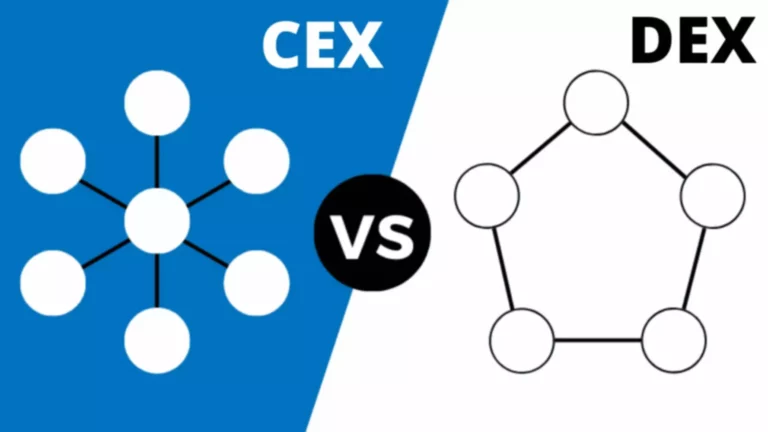Short sellers present liquidity, as they are usually promoting into demand when share prices appreciate, and conversely trying to buy again shares when costs decline. For instance, if most investors are optimistic about the asset’s future performance, ETF share costs improve, resulting in more demand of ETF shares. Short sellers who hold a contrarian view will borrow shares from brokers and sell them when there is more demand for purchases after which buy them again later, when most traders are promoting. These transactions could impact the liquidity of underlying safety markets. For less liquid securities, such as rising market equities, market makers could not have the power to source the securities. In this case, the ETF issuer would possibly accept cash-in-lieu as a half of the ETF basket, buy these securities directly from underlying security markets for the fund, and then cost associated prices to the market maker.

Alternatively, a stock for ABC, Inc. has a low buying and selling quantity and a wide bid-ask unfold of $2, indicating low liquidity. Here, buying or selling ABC shares wouldn’t obtain costs as favorable, and buying and selling large quantities might noticeably change the worth. Through this simplified example, it’s evident how liquidity impacts the benefit of buying and selling and the steadiness of the market price, highlighting its importance in investment choices.
Instance Of Liquidity Differences With Comparable Underlying Property
Communications such as this aren’t neutral and are supplied in connection with the promoting and advertising of services. No, only APs are allowed to transact directly with the ETF issuer to create and redeem shares. Retail investors can only purchase or sell ETF shares on a secondary market change. Liquidity describes how easily an investment may be converted into money. A extremely liquid asset can be purchased and bought shortly, in giant amounts, and with out significantly impacting its market price. Less liquid assets may take longer to sell or require accepting a discounted value.
A Guide to ETF Liquidation – Investopedia
A Guide to ETF Liquidation.
Posted: Tue, 06 Feb 2024 08:00:00 GMT [source]
As with any financial safety, not all ETFs have the same degree of liquidity. An ETF’s liquidity is affected by the securities that it holds, the trading volume of the securities held, the trading quantity of the ETF itself, and the funding environment. Understanding how these elements have an result on an ETF’s liquidity and, subsequently, how its profitability will improve results is especially important in environments where every cent counts. One more essential role of an ETF liquidity provider lies in maintaining this market environment friendly.
Ishares Semiconductor Etf
Buying and promoting shares may lead to brokerage commissions, which will reduce returns. The size of an ETF measured by its assets beneath administration (AUM) likewise doesn’t necessarily dictate its liquidity. Even ETFs with smaller AUM can have excessive liquidity in the event that they observe a liquid index or sector and have energetic APs facilitating the creation and redemption process. In essence, the liquidity of the underlying holdings of an ETF immediately impacts the ETF’s liquidity.
The Site isn’t directed to any individual in any jurisdiction where the publication or availability of the Site is prohibited, by cause of that person’s nationality, residence or in any other case. Frequent trading of ETFs may considerably increase commissions and different costs such that they could offset any savings from low fees or costs. Because of their slim focus, sector investing tends to be extra unstable than investments that diversify throughout many sectors and firms. Equity securities may fluctuate in worth and may decline considerably in response to the activities of individual firms and basic market and financial conditions. When traders could additionally be tempted to make impulsive funding selections, listed below are 4 things they can do as an alternative. That’s why traders flip to SPDR® ETFs — particularly when the VIX trends above its long-term average.
Ultimately, so lengthy as the AP can effectively and efficiently commerce the underlying basket of securities, these demand and supply imbalances may be adjusted constantly. Liquidity suppliers give costs to the market for shares to be bought or offered whether or not on an exchange or bilaterally (directly) to the investor OTC. These bid and ask prices are derived from the underlying baskets value and the various prices attached https://www.xcritical.com/ to that. Liquidity, in its broadest definition, refers to how rapidly or easily a safety may be purchased or sold for a price reflecting its price. For single shares, the market value could be outlined as the value that somebody is willing to pay for the stock within the secondary market depending on the supply and demand at different costs.

Exchanges give firms looking to market publicly listed securities the platform to do that. This website is a common communication being offered for informational purposes only. It is academic in nature and never designed to be a recommendation for any specific investment product, strategy, plan characteristic or different purposes. By receiving this communication you agree with the meant purpose described above. Any examples used in this material are generic, hypothetical and for illustration functions solely. Morgan Asset Management, its associates or representatives is suggesting that the recipient or any other person take a particular course of action or any motion in any respect.
ETFs trade like shares, are topic to investment danger, fluctuate in market value and should commerce at costs above or beneath the ETFs web asset worth. Bid-Ask Spread The difference between the best worth a purchaser is willing to pay for an asset and the bottom worth the vendor will accept to promote.
Vaneck Semiconductor Etf
Perhaps the commonest ETF false impression is that funds with low every day buying and selling volumes or with small amounts of belongings beneath administration will be troublesome or costly to trade. ETFs rely on a singular creation and redemption mechanism that provides primary market liquidity. Authorized members (APs) can create or redeem ETFs and trade the “baskets” of the ETF’s underlying securities for new ETF shares from the fund issuer. Given their relationship with market individuals and insight into major and secondary market activity, they are a crucial useful resource for buyers seeking to execute massive ETF trades efficiently.

ETFs have turn into enormously popular among particular person investors, however there are many risks to consider when buying or selling them. Liquidity can limit an investor’s ability to purchase and promote without influencing the market price in an unfavorable method. In general, individual traders should persist with larger ETFs with excessive buying and selling volumes and tight spreads to reduce their risk, while additionally making sure that the ETF’s holdings aren’t obscure or illiquid securities. Simultaneously making presents to buy (bid) and promote (ask) securities at specified prices, market makers present two-sided liquidity to different market individuals. They facilitate the trade of securities between finish traders by bridging the gap between the time when natural consumers and sellers enter the market. Market makers profit from the spreads of their bid/ask quotes, in addition to arbitrage alternatives between an ETF’s NAV and its market price.
Etf Redemption Process
A well-structured ETF with liquid underlying property can better adapt to market demand modifications, preserving honest prices and an efficient investor buying and selling expertise. The “secondary market” liquidity seen on exchanges is important for ETF investors and traders. However, not like stocks, ETFs possess another layer of liquidity concerns due to how they are created.
There could be no assurance that forward-looking statements, including any projected returns, will materialize or that precise market circumstances and/or performance results is not going to be materially different or worse than those offered. In episode 4 of “Investing in the new possible” podcast series, Tom Digby and Kunhee Park highlight how ETFs can get their liquidity and the importance of understanding the mechanism. Volmageddon A blending of the words volatility and Armageddon, refers back to the extraordinary US stock market exercise that occurred on February 5, 2018. VIX
Investors should buy or sell ETF shares within the secondary market both on-exchange or over the counter (OTC). Only entities generally known as Authorized Participants (APs) (also often identified etf liquidity as Participating Dealers (PDs)) can access the first market to create and redeem shares. Investors generally incur the price of the spread between the prices at which shares are purchased and sold.
The real-time trading characteristic of ETFs offers intraday liquidity, allowing traders to execute trades throughout the buying and selling day. Alternatively, mutual funds provide end-of-day liquidity, with all orders processed at the closing NAV. This fundamental distinction makes the liquidity experience between ETFs and mutual funds distinct, catering to totally different investor preferences and techniques.
Excessive Trading Volume Equals Excessive Liquidity
By constantly creating and redeeming shares, these approved participants meet the supply and demand wants of traders on the secondary markets where they actually commerce. Investors with large ETF trades can even tap into main market liquidity by working with a certified participant to create or redeem ETF shares directly with the fund company. Visibly, investors can see the primary layer of liquidity in the form of costs to buy and/or promote ETF shares on the trade (known as common daily buying and selling volume, ADV). However, very related to an iceberg, there is a lot more liquidity under the floor within the main market by way of the creation and redemption process. Unlike ETFs, that are traded on exchanges like shares, mutual fund shares are purchased and offered instantly with the fund at the day’s closing NAV.
This doesn’t constitute a proposal or solicitation by anyone in any jurisdiction in which such an offer isn’t authorised or to any individual to whom it is unlawful to make such a proposal or solicitation. A long-running debate in asset allocation circles is how a lot of a portfolio an investor ought to… All persons and entities accessing the Site accomplish that on their own initiative and are responsible for compliance with applicable native legal guidelines and rules.
